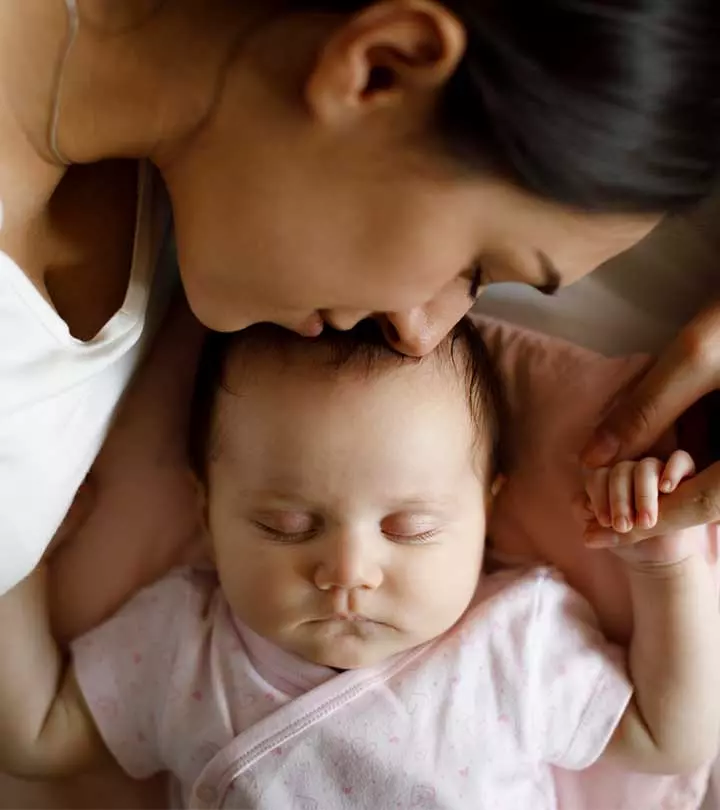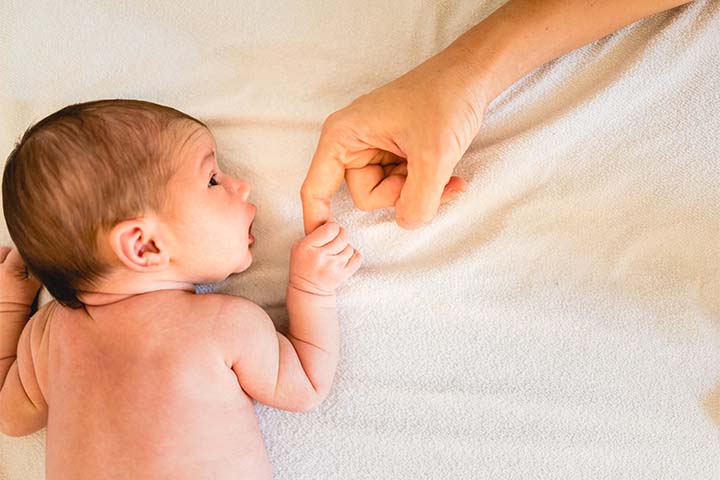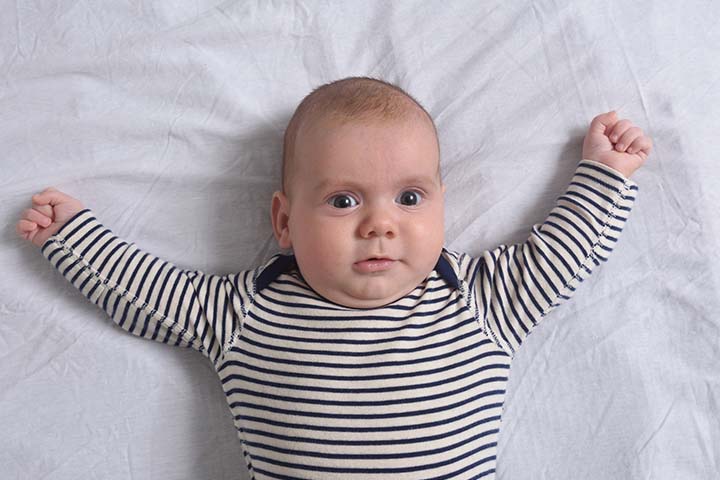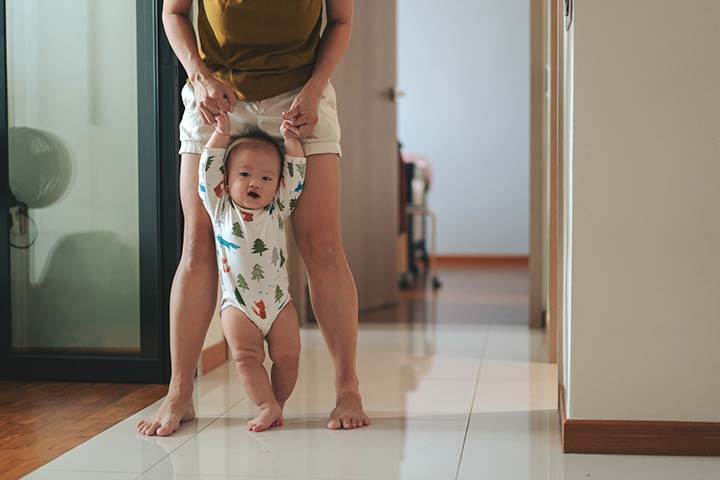
Image: iStock
Every living creature has reflexes and your baby is no different. Even one-celled organisms can produce reflex-like responses to stimulation. This is extremely important as reflexes are what helps movement. Babies are born with a special set of reflexes designed by nature to keep them safe and cater to their needs. They also help infants adapt to their environment at the beginning of life. So, what are these reflexes and why are they important for your tiny human? If you’d like to know about the various reflexes your baby has then this is the article for you! Keep on reading to know more.
What A Newborn Reflex Is
The newborn reflex is an instinctive reaction that happens in response to stimulation (1). Reflexes are best described as uncontrollable movements made by a child or a baby as a response to touch light, sound, or motion. However, some reflexes help us for months, while others disappear after several weeks (2).
Why Are Reflexes Important
Image: IStock
The reflexive actions that your newborn makes may seem cute and harmless but they are extremely important to the survival of human beings. This is because reflexes act as a guide for babies in navigating their new life. They help them learn how to act without the protection of their mother’s womb, which is a big deal for your little one. Infant reflexes also help pediatricians to check whether the brain and nervous system of your babies are performing properly (3).
A List Of Reflexes That Should Be Present In Newborns
1. Rooting Reflex
The rooting reflex is crucial as it helps the baby find a food source, be it a nipple or a bottle. This is when babies turn their heads towards touch when their cheeks or the corners of their mouths are stroked or touched. In cases where the baby is exclusively breastfed, they may turn their heads in search of food when the breast touches their cheeks. However, bottle fed babies have no such search for the nipple when placed next to the breast. But they too have a rooting reflex. This is why all babies turn their head towards the hand that caresses them (4).
2. Sucking Reflex
Image: IStock
This is probably the most important infant reflex. It works alongside the rooting reflex in order to help the baby eat instinctively. This is when the baby automatically starts sucking when something touches the roof of their mouth, be it a nipple, a bottle or just a finger. This reflex helps the baby manage the processes of breathing, sucking, and swallowing (5).
3. Grasp Reflex
This is the reflex that eventually helps babies master the skill of taking things with the use of their hands. So when something touches the palm of the baby’s hands, they immediately curl their fingers around the object and grasp it. This grasp is very strong as babies are able to hang onto something that touches them (6) .
4. Moro Reflex Or Startle Reflex
Image: IStock
This reflex is a reaction to a startling sound or movement. And sometimes, an infant’s own cry can trigger this reflex. This is when babies throw out their arms and legs and throw their head back as a response to a stimulus that startles them. They then curl their limbs back in and may even start crying (7).
5. Tonic Neck Reflex Or Fencing Reflex
This reflex is only revealed when a newborn turns their head to one side. The arm on this side is stretched up, while the arm on the opposite side bends at the elbow. The function of this reflex is to start hand-eye coordination (8).
6. Stepping Reflex
Image: IStock
This is a surprising reflex. If you hold a baby upright with their feet touching any solid surface, they will move their legs like they are trying to walk even if they are nowhere near close to accomplishing this feat without your support (literally). This is also the reflex that helps the baby crawl to their mother’s breast from their abdomen after delivery. How cool is that! And it returns later when the baby learns to walk (9).
7. Babinski Reflex
Image: IStock
This reflex is named after neurologist Joseph Babinski, who gave its description in the late nineteenth century. You can observe this reflex when you stimulate the back of a baby’s foot. When you touch the outer part of the sole, the big toe will flex up and out and the other toes fan out (10).
Taking care of your baby and ensuring that they are developing well and normally can be overwhelming. But by keeping track of the reflexes they have and being well educated about them, you are one step closer to ensuring that your child is healthy and on the right track. Happy parenting!

















